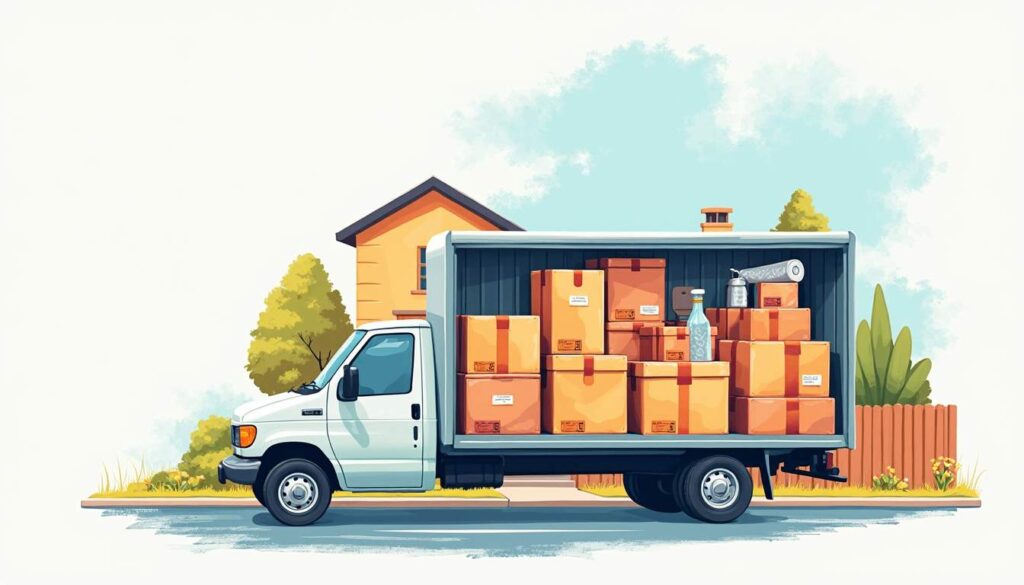Moving to a new place can be both exciting and daunting. The key to a smooth transition lies in effective packing. In this article, we will explore essential packing tips and tricks that will help you pack like a pro for your big move. From understanding the basics of packing to mastering efficient packing techniques, we’ve got you covered.
Understanding the Basics of Packing
Before you dive into the packing process, it’s vital to understand some fundamental principles that can streamline your efforts and make your move more organized.
The Importance of Planning Ahead
Planning is the cornerstone of effective packing. Start by creating a timeline that includes when you want to start packing and when you need to be completely moved out. This helps to avoid last-minute chaos.
Additionally, consider starting with non-essential items. These are the items you won’t need immediately and can be packed away first, including seasonal clothing or decorative items.
Moreover, it’s beneficial to create a checklist of tasks to accomplish each week leading up to your move. This could include things like notifying utility companies, updating your address, and scheduling a moving truck. By breaking down the tasks into manageable chunks, you can reduce stress and ensure that nothing slips through the cracks as your moving day approaches.
Choosing the Right Packing Materials
Using the right packing materials can make a significant difference in ensuring your items are protected during the move. Invest in sturdy boxes, packing tape, bubble wrap, and packing paper.
Don’t forget to gather some materials you may already have around the house, like old newspapers or linens, which can serve as excellent padding for fragile items.
Additionally, consider the size and shape of your boxes. Smaller boxes are ideal for heavy items like books, while larger boxes can accommodate lighter, bulkier items like bedding or pillows. Label each box clearly with its contents and the room it belongs to; this will make unpacking in your new home much more efficient and organized.
Sorting and Organizing Your Belongings
Sorting your items before packing not only makes the process easier but also helps you declutter. Go through each room and categorize your belongings into groups such as keep, donate, and discard.
Consider holding a garage sale for items you no longer need. This not only reduces the amount you have to pack but can also provide some extra cash for your move.
In addition to a garage sale, you might want to explore online selling platforms or local community groups where you can list items for sale. This can be a convenient way to reach potential buyers without the hassle of setting up a physical sale. Plus, it allows you to connect with your community and perhaps even make a few new friends before you leave. As you sort through your belongings, take a moment to reflect on the memories attached to certain items, but remember to stay focused on your goal of a fresh start in your new space.
Room-by-Room Packing Strategies
Once you have a clear plan in place, it’s time to tackle the packing room by room. This targeted approach helps maintain organization and reduces overwhelming feelings.
How to Pack Your Kitchen Efficiently
The kitchen can be one of the most challenging areas to pack due to its numerous small items. Start by emptying cabinets and drawers systematically.
Keep items that you use frequently, like pots and utensils, separate for easy access in your new kitchen. Use dish towels to wrap delicate items such as glasses and plates to add an extra layer of protection. Additionally, consider using stackable containers for pantry items; this not only saves space but also keeps everything organized and easy to locate when you arrive at your new home. Labeling each box with its contents and the room it belongs to can further streamline the unpacking process, ensuring that you can quickly find essential kitchen tools when you need them most.
Safeguarding Your Bedroom Items
Your bedroom typically contains many delicate or personal items. Start by sorting through clothing, eliminating anything you haven’t worn in the last year.
Consider packing clothing in suitcases or drawers to make efficient use of space. For fragile items like mirrors and lamps, use bubble wrap and cardboard for added security during transport. Don’t forget to pack your bedding and linens; these can be used to cushion fragile items, providing extra protection while also minimizing the number of boxes you need. Moreover, take the opportunity to organize your closet by donating or discarding items that no longer serve you, making your new bedroom feel fresh and uncluttered right from the start.
Packing Your Living Room with Ease
The living room holds various items that need careful packing. Begin with decorative pieces, books, and electronics, ensuring you separate cords and small parts to avoid losing them.
For furniture, disassemble larger pieces if possible, keeping screws and parts in labeled bags. Wrap upholstery items in moving blankets to prevent scratches and tears. When it comes to your entertainment system, take photos of the wiring setup before disassembling it; this will make reassembly in your new space much simpler. Additionally, consider using your soft furnishings, like cushions and throws, to fill gaps in boxes, providing extra cushioning for fragile items while maximizing space. This not only helps protect your belongings but also makes your packing process more efficient.
Special Care Items and How to Handle Them
Some items demand special care during the moving process. Properly packing these will minimize the risk of damage and loss.
Packing Fragile Items
Fragile items, including glass and ceramics, require careful attention. Use bubble wrap or packing paper to securely wrap each item before placing them in boxes.
When packing, be sure to fill any empty spaces in the box with packing peanuts or crumpled paper to prevent movement during transit.
Handling Electronics and Appliances
Electronics and appliances are significant investments that require careful handling. If you still have the original boxes for these items, use them to pack as they are designed for optimal protection.
For appliances, safely remove any detachable parts, and ensure you securely tape down any cables to avoid tangling.
Dealing with Valuable and Sentimental Items
Valuable and sentimental items often come with emotional significance, making it crucial to pack them with extra care. Consider transporting these items personally rather than placing them in the moving truck.
Keep a separate box for important documents, heirlooms, or collectibles, ensuring they are stored in a safe place at all times.
Efficient Packing Techniques
To maximize your packing efficiency, utilizing smart techniques can save time and space while ensuring your belongings remain safe during your move.
The Art of Layering
Layering is an effective packing method where you stack items strategically. For example, heavy items should always be placed at the bottom of a box with lighter items on top. This prevents damage to fragile items.
Additionally, use larger boxes for lightweight items and smaller boxes for heavier items. This will make your moving experience smoother by reducing the risk of overpacking.
Maximizing Space with Nesting
Nesting is another excellent technique, especially for bowls, cups, and other similar items. By placing smaller items inside larger ones, you can save significant space and reduce the number of boxes needed.
Similarly, use every available space by packing shoes inside of boots and small items in drawers. This maximizes space and minimizes the clutter of loose items.
The Importance of Labeling
Last but not least, labeling is critical to an organized move. Clearly label each box with its contents and the room it belongs to. Use color-coded labels for different rooms to make it visually easier to identify where items belong in your new home.
Consider numbering the boxes and maintaining a separate inventory list to track where everything is and ensure nothing gets lost during the move.
By following these packing tips and tricks, you can make your moving experience smoother and stress-free. Remember, the key to packing like a pro lies in planning, organization, and strategic packing techniques. Happy moving!
















